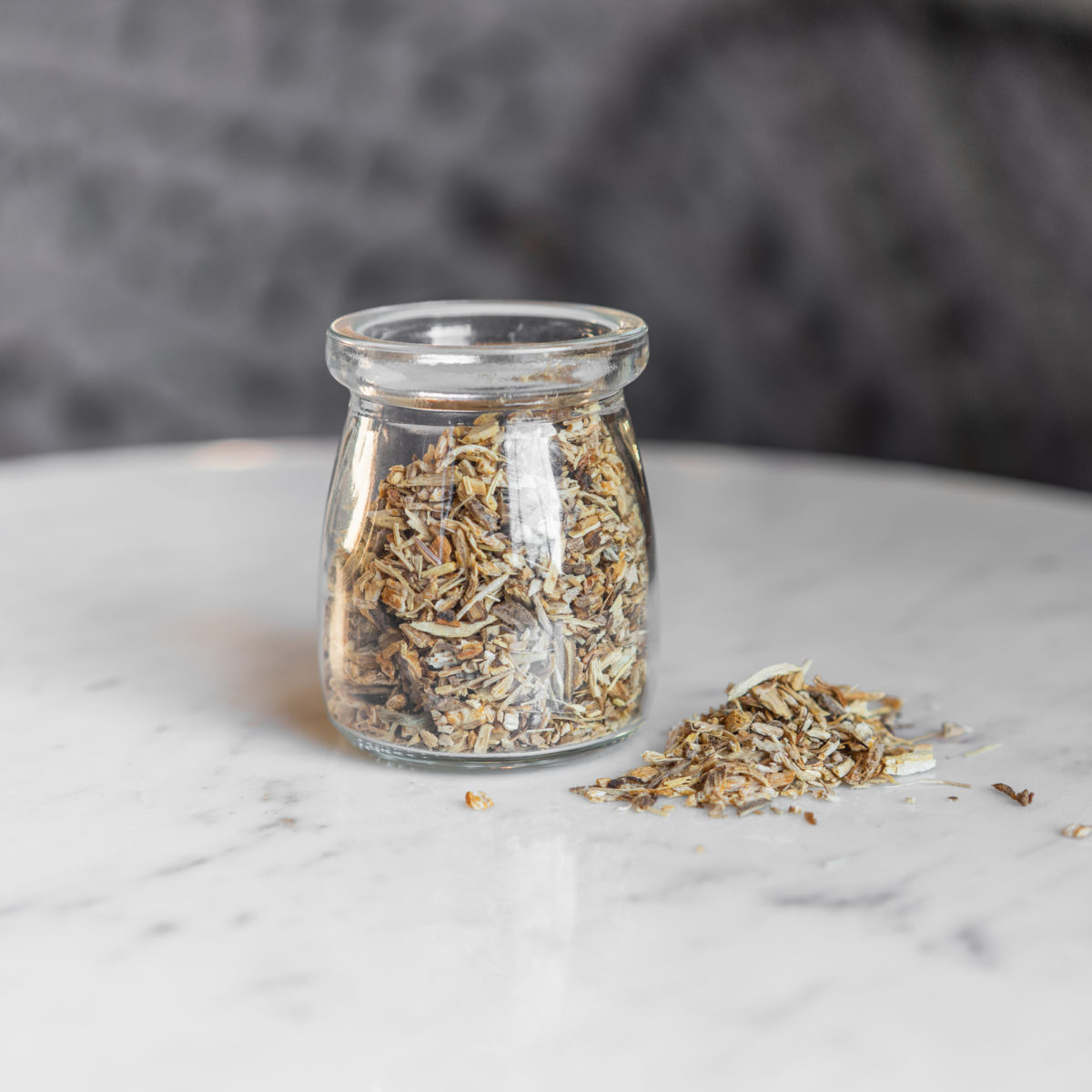
COMMON NAME (Chinese Name)
Chinese Spikenard (Gan Song)
BOTANICAL NAME
Nardostachys jatamansi
USES
Chinese spikenard has a well-documented history of oral use as an often-effective alternative therapy for neuropsychiatric disorders like (historically) epilepsy, “hysteria,” and “mental weakness.” Today, it’s generally understood that these supplements may help minimize and control the symptoms of seizure disorders, uncontrolled anger, migraines, depression, and anxiety. Recent research suggests its effectiveness in these contexts is likely because Chinese spikenard supplements seem to have a protective effect against stress-induced changes in cognitive function and memory formation/recall.
All supplements and oils derived from the hairy root structures of the Chinese spikenard plant have significant sedative and tranquilizing properties as a result of the presence of “valtrate” among other derivative compounds. That is, in different concentrations and contexts, ingesting Chinese spikenard supplements both reduces the physical symptoms of agitation (high blood pressure, muscle tension, hyperactivity) and chemically regulates a person’s mental state (similar to most anti-anxiety and antidepressant medications). What’s more, recent studies have unequivocally confirmed that Chinese spikenard root extracts have such significant antioxidative properties as to definitively impact the development and progression of oxidative-stress related disorders (which include depression, anxiety, bipolar disorder, and schizophrenia).
When used topically, Chinese spikenard extracts also have demonstrated some antimicrobial and antifungal properties. Recent research also suggests that applying Chinese spikenard extract to the scalp may stimulate hair growth, though much more study in human trials is needed to confirm this effect.
In Traditional Chinese Medicine Chinese Spikenard is categorized as a substance that settles the Shen (Spirit.) This is why it is considered useful for psychiatric disorders. As its endangered species status makes it little used there is little
PREPARATION & ADMINISTRATION
The only part of the Chinese spikenard plant used in medicinal preparations is the dried hairy root structures, which are prepared most often via aqueous (water-based) hot water decoction. The resulting extract has both oral and topical uses. The essential oil has been used extensively over the centuries for medicine and perfumery.
Not to be confused with Indian valerian (Valeriana jatamansi), though Indian valerian is a member of the same family and has strikingly similar-looking root structures (especially when dried). Some herbalists may use the dried roots of these two plants interchangeably, though there is some empirical evidence to suggest their biological activities are at least slightly different. Given that Chinese spikenard is relative scarcity in the wild and that medicinal harvesting kills the plant, Chinese spikenard supplements are often expensive and contribute to endangering species. Cheaper products likely contain Indian valerian instead.
PRECAUTIONS
The bioactive compounds in Chinese spikenard supplements may alter both brain chemistry and blood pressure. As a result, people who are already under a physician’s supervision (or taking prescription medications) to treat mood disorders or that impact their blood pressure should not use Chinese spikenard supplements without first consulting their doctor. What’s more, there is insufficient information about whether these supplements are safe for use during pregnancy or while breastfeeding.
You should consult with a certified herbalist, physician or other qualified healthcare professional before taking Chinese spikenard.
REFERENCES
Aldred, Elaine M, et al. “Terpenes.” Pharmacology, Churchill Livingstone, 6 Nov. 2009, www.sciencedirect.com/science/article/pii/B9780443068980000220.
Dhiman, Nisha, and Amita Bhattacharya. “Nardostachys Jatamansi (D.Don) DC.-Challenges and Opportunities of Harnessing the Untapped Medicinal Plant from the Himalayas.” Journal of Ethnopharmacology, vol. 246, 2020, p. 112211., doi:10.1016/j.jep.2019.112211.
Gottumukkala, Venkateswararao, et al. “Phytochemical Investigation and Hair Growth Studies on the Rhizomes of Nardostachys Jatamansi DC.” Pharmacognosy Magazine, vol. 7, no. 26, 2011, p. 146., doi:10.4103/0973-1296.80674.
Gupta, Rajinder & Disket, Jigmet & Mann, Sonia. (2012). A Review on Spikenard (Nardostachysjatamansi DC.)- An ‘Endangered’ Essential Herb of India. International Journal of Pharmaceutical Chemistry. 2. 10.7439/ijpc.v2i3.716.
Jha, Sweta V., et al. “Pharmacognostic and Phytochemical Studies on the Rhizome of Nardostachys Jatamansi DC. Using Different Extracts.” Pharmacognosy Journal, vol. 4, no. 33, 2012, pp. 16–22., doi:10.5530/pj.2012.33.3.
Karanth, Ks, et al. “Nardostachys Jatamansi Extract Prevents Chronic Restraint Stress-Induced Learning and Memory Deficits in a Radial Arm Maze Task.” Journal of Natural Science, Biology and Medicine, vol. 3, no. 2, 2012, p. 125., doi:10.4103/0976-9668.101879.
Razack, Sakina, et al. “Antioxidant, Biomolecule Oxidation Protective Activities of Nardostachys Jatamansi DC and Its Phytochemical Analysis by RP-HPLC and GC-MS.” Antioxidants, vol. 4, no. 1, Dec. 2015, pp. 185–203., doi:10.3390/antiox4010185.
Sahu, Renu & Dhongade, Hemant & Pandey, Ajit & Sahu, Poonam & Sahu, Varsha & Patel, Dipali & Kashyap, Pranita. (2016). Medicinal Properties of Nardostachys jatamansi (A Review). Oriental Journal of Chemistry. 32. 859-866. 10.13005/ojc/320211.
Salim, Samina. “Oxidative Stress and Psychological Disorders.” Current Neuropharmacology, vol. 12, no. 2, 2014, pp. 140–147., doi:10.2174/1570159×11666131120230309.

Comments (0)